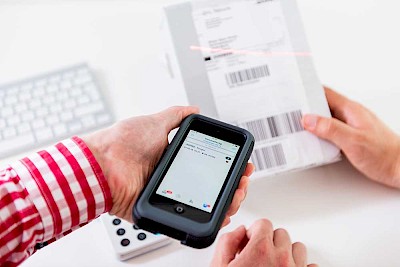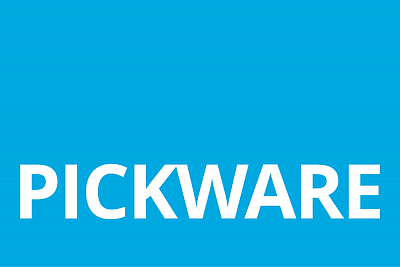
Shopware merchandise management
Why a merchandise management / ERP system for Shopware
For the economic success of an online store and for predictable growth, you inevitably need a merchandise management or ERP system nowadays. In this article, we explain what is behind such a system, why it makes sense to use it, how it works and what advantages it offers.
In relation to Shopware, we will introduce you to ERP systems and name important factors and solutions for finding a suitable ERP system for you and your company.

Shopware merchandise management - find all the information here
- Why an ERP system for Shopware?
- What is an ERP system?
- What tasks does such a system perform?
- The basis for multichannel
- Which systems are available for Shopware?
- Which system is right for me?
- The best merchandise management system in combination with Shopware for small and medium-sized retailers?
- Connect your own ERP system to Shopware
- Conclusion on Shopware merchandise management
Why an ERP system for Shopware?
Even in the free Community Edition (CE), Shopware offers sufficient functions to successfully operate an online store.
With growing order volumes, the manual processes for order processing and article maintenance are not only becoming increasingly time-consuming and inefficient, but also represent a major source of errors.
The use of a merchandise management or ERP system is therefore essential for the serious operation of a successful online store.Such a system performs important functions in business operations and automates processes in the value chain.The choice of the right system or the integration of existing systems should always be carefully considered and planned in order to avoid high project costs or economic failure.
What is an ERP system?
The basic tasks of a merchandise management system are to digitally manage and control purchasing, sales, warehouse/article master and associated data. Many processes in and between the various areas are partially or even fully automated and thus support effective and error-free operation.
Systems that go beyond the functional scope of merchandise management, i.e. cover other business areas of a company, are referred to as "ERP systems" ("Enterprise Resource Planning"). Depending on the industry and requirements, an ERP system can, for example, fully integrate the areas of finance, controlling, production, resource planning, service and logistics.

What tasks does such a system perform?
It is particularly important for the operation of a successful online store that goods can be sold quickly, reliably, completely and economically. To achieve this, the processes for warehouse/article management, purchasing and sales are interlinked in a merchandise management system.
Warehouse/article management
The merchandise management system holds information on which items are available and in what quantities. Thanks to the digital warehouse management system (WMS), the system knows exactly which quantities are in which storage location. "Chaotic warehousing" offers the possibility of storing identical items in different locations in order to optimize logistics processes and use storage space more efficiently, for example.
Digital inventory management also lays the foundation for a "continuous inventory", as all incoming and outgoing goods are permanently recorded.
Sales
No business without sales! Merchandise management supports many processes here, e.g. by allowing quotations or invoices to be created and sent digitally. The conditions (item prices, payment options, etc.) can be defined individually for each customer.
Sold goods are automatically "reserved" in the warehouse to avoid duplicate sales.
Purchasing
In conjunction with the warehouse and sales, the purchasing area of a merchandise management system controls demand-oriented procurement in the company.
The system not only holds information about the suppliers and respective purchase prices, but can also create automatic order proposals based on sales or minimum or target stock levels. This allows you to keep track of your actual requirements, even if you have a large number of items and sales, and avoid storing too much or too little stock unnecessarily.

Logistics/distribution
In online retail in particular, it is often the case that a large number of small orders are placed. The system assists and coordinates these processes so that they can be picked by several people in large storage areas. For example, required shipping documents such as delivery bills or shipping labels are created automatically and picking is output in an optimized manner. Modern systems offer paperless working by means of mobile devices and barcode-supported recording.
Finance
Even though digital payments via PayPal, SOFORT bank transfer, credit card, etc. are very common in online retail, many orders are still placed in the traditional way via prepayment or purchase on account. Here in particular, it is essential that incoming payments are recorded accurately so that goods are not delivered unpaid or invoices are not settled.
Powerful systems provide support here, for example by automatically reading and assigning postings to the bank account or sending reminders for overdue invoices.
Other areas
The above explanations are just a small example of important processes. Many systems that are designed for online retail or e-commerce offer a significantly extended range of functions in order to automate and effectively carry out as many steps in the value chain as possible.
The basis for multichannel
Nowadays, large marketplaces such as Amazon or eBay are a central point for the sale of various goods alongside the many individual stores on the Internet. Their popularity and the large number of users offer good potential for further expanding your own business.
Both the marketplaces and the customers have special and strict requirements in terms of product availability, delivery time and service.
Only with a suitable merchandise management or ERP system do effective processes and precise inventory data enable you to meet these requirements reliably and over the long term. Unreliable processes not only annoy customers, but can also lead to permanent exclusion from the marketplace.

Which systems are available for Shopware?
The market for ERP systems is very diverse and already offers many possibilities for a Shopware connection.
Known merchandise management or ERP systems are, for example:
- Microsoft Dynamics 365 Business Central (formerly Dynamics NAV/Navision)
- Microsoft Dynamics AX (formerly Axapta)
- SAP Business One
- SAGE
- JTL
- Xentral (formerly WaWision)
- HS / Hamburger Software
- Pickware
- IBM System i (formerly AS/400)
- VARIO
- Lexware
- orgaMAX
Pickware is a special feature here. Pickware is not a standalone system that communicates with the store via an interface, but a solution that is fully integrated into Shopware. In our comparison Pickware vs. JTL, we as Pickware Agency have compared some differences as well as advantages and disadvantages of the well-known systems.
Which system is right for me?
The question often arises as to which solution is "the best system for Shopware".
However, the answer is as simple as this question: there is no such thing as the "best" system. Rather, various factors such as the industry, size, sales strategy and processes of a company play an important role in the choice and structure of the IT solution.
It is also important to ensure that the system is legally compliant and can be operated securely and reliably thanks to regular updates and good support from the manufacturer.It also makes sense to use a system that can be customized, e.g. through plugins or programming, in order to build a long-term and competitive digital infrastructure for special requirements.The best merchandise management system in combination with Shopware for small and medium-sized retailers?
Please bear in mind that there is no single best ERP system for Shopware, as the selection of the right ERP system must take your business processes and goals into account. Nevertheless, we will tell you which merchandise management system for Shopware has often proven to be the best for our customers and which is particularly popular with small and medium-sized online retailers
Pickware
For small and medium-sized companies, Pickware is a very popular choice for Shopware, as the system comprehensively and reliably maps the necessary processes and areas for operating an online store. The ability to connect to various shipping service providers and the modern solutions for barcode-supported warehouse management and order picking mean that tedious manual processes can be automated very quickly.
Medium-sized and large companies that have, for example, an extensive B2B trade or their own production often use well-known ERP systems such as SAP, Microsoft Dynamics NAV, Microsoft Dynamics AX or SAGE. These systems are usually individually adapted to the needs of the company and supplemented by industry-specific extensions.
Connect your own ERP system to Shopware
It is often the case that Shopware needs to be connected to an existing ERP system in order to use an online store as an additional sales channel for B2B or B2C.
With an integrated interface (Shopware API), Shopware offers a universal option for transferring data from any system.
Depending on the ERP system, there is already software that enables a partial or complete connection to Shopware. As a rule, however, it is always necessary to carry out individual programming in order to fully and reliably integrate Shopware into the company's IT system.
Conclusion on Shopware merchandise management
The market of systems on offer is just as large as the number of factors you should consider when deciding on a suitable solution.
For medium-sized or large companies that already use an ERP system, the clean integration of the online store into the existing IT landscape should be the first choice.Small and medium-sized companies with a focus on online retail are often very well advised to use Pickware, the fully integrated Shopware ERP solution.
Pickware is not only a very good way to get started with digital merchandise management, but is also a good alternative to JTL (more on this in our article JTL vs. Pickware) or other systems for Shopware.

Still have questions about the best merchandise management system for Shopware?
Choosing the right system is crucial to your success. Whether it's the introduction, conversion or integration of an ERP solution: as an e-commerce agency, we will be happy to advise you in an initial, non-binding consultation.
The best Shopware merchandise management system for your online store?
You can also find the best Shopware ERP solution together with one of our experts in one or more workshop days. We will visit you, analyze your structures, processes and conditions and suggest sustainable, scalable solutions for the best Shopware ERP for you. If you wish, we can carry out the complete implementation for you, train your employees and optimize your warehouse and hardware so that your Shopware merchandise management system runs smoothly.









